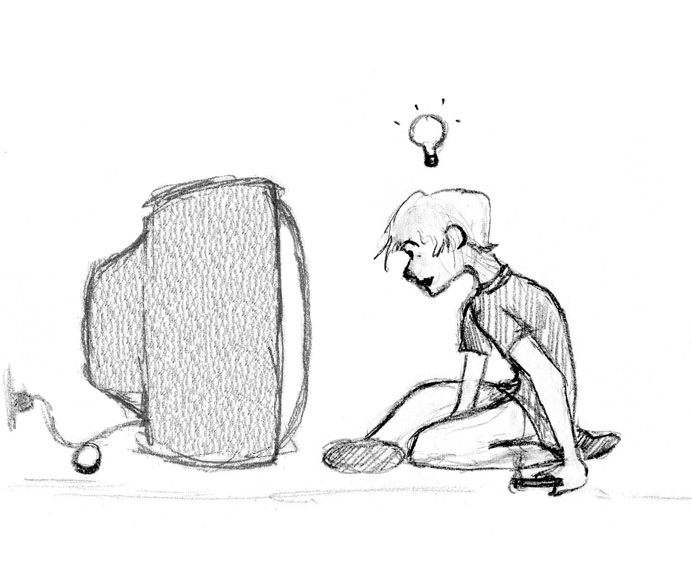Tired of hearing your parents tell you to turn off the TV? Well, now you can tell them you have a legitimate reason to watch: it’s making you smarter.
For decades, we’ve held the assumption that watching TV “dumbs down” our cognitive faculties, even though we’re all guilty of it. But, according to Steven Johnson of The New York Times, regardless of the content of TV shows, the culture is becoming more cognitively demanding of TV shows, not less—a phenomenon known as the Sleeper Curve. To keep up with certain shows, people have to follow multiple storylines, make inferences, and track shifting social and structural relationships within the show.
Multiple Threading
With the arrival of “Hill Street Blues” in 1981 came the age of multiple threading—having multiple storylines and lead characters interwoven throughout a show. Multiple threading exposes audiences to complex narratives, forcing them to analyze certain aspects of the plot on their own.
“In a single season of Sherlock, there are multiple plots occurring simultaneously,” senior Drew Ferguson said. “For example, in one episode, a cab driver manages to kill his victims by tricking them into killing themselves, while in the subsequent episode, Sherlock tries to figure out codes to small cases. The watcher has to try to figure out how these two plots are related to each other.”
If you compare the structures of major dramas in earlier decades to modern shows like Sherlock, you’ll see how dramatically they have changed—and for the better. In the words of Johnson, “this is as much a map of cognitive changes in the popular mind as it is a map of on-screen developments, as if the media titans decided to condition our brains to follow ever-larger numbers of simultaneous threads.”
Scarcity of “Flashing Arrows”
Whenever directors feel as though audiences won’t understand a certain aspect of a plot, they insert “flashing arrows” into their scripts to give audiences the information they need to make sense of the plot as a whole. However, over the past two decades, “flashing arrows” have grown increasingly scarce. Audiences are forced to interpret ambiguities and mysteries in the plots on their own.
“In the show White Collar, I don’t fully understand what is happening in an episode until the very end,” sophomore Sareena Halani said. “It happens in every episode. And I don’t realize how everything comes together until the end of the season.”
Many TV shows deliberately leave out these “flashing arrows.” Episode after episode refers to some crucial but unexplained aspect of the show, and it is not until the seventh reference that you realize that you’re supposed to be confused. What’s more important, however, is that the viewer is able to make connections between these crucial pieces of information so that by the end of the season, they will realize where the directors were coming from.
Better Reality TV
Finally, the quality of reality programming has improved. The structure of today’s reality TV shows is more like a video game, involving a series of tests that grow harder over time. Also, characteristic of both the gaming culture and reality TV is that the rules are not fully established in the beginning. You learn as you go along.
“On a show like ”Survivor” the participants—and the audience—know the general objective of the series, but each episode involves new challenges that haven’t been ordained in advance,” Johnson said.
For example, the final round of the first season of The Apprentice presented a new conflict for the last contenders—in addition to trying to survive, the contenders also had to maintain the best relationships with other contenders.
Don’t get me wrong—I’m not saying that the Sleeper Curve is an excuse for watching TV; watching a day of TV will never replace a few hours of studying. But to truly appreciate the cognitive training provided by the Sleeper Curve, sit down and watch a few hours of a show like “24,” “Survivor” or “White Collar,” and you’ll realize the subconscious inferences you’ll be making to figure out unexplained aspects of plots and the subsequent revelations you’ll have.





